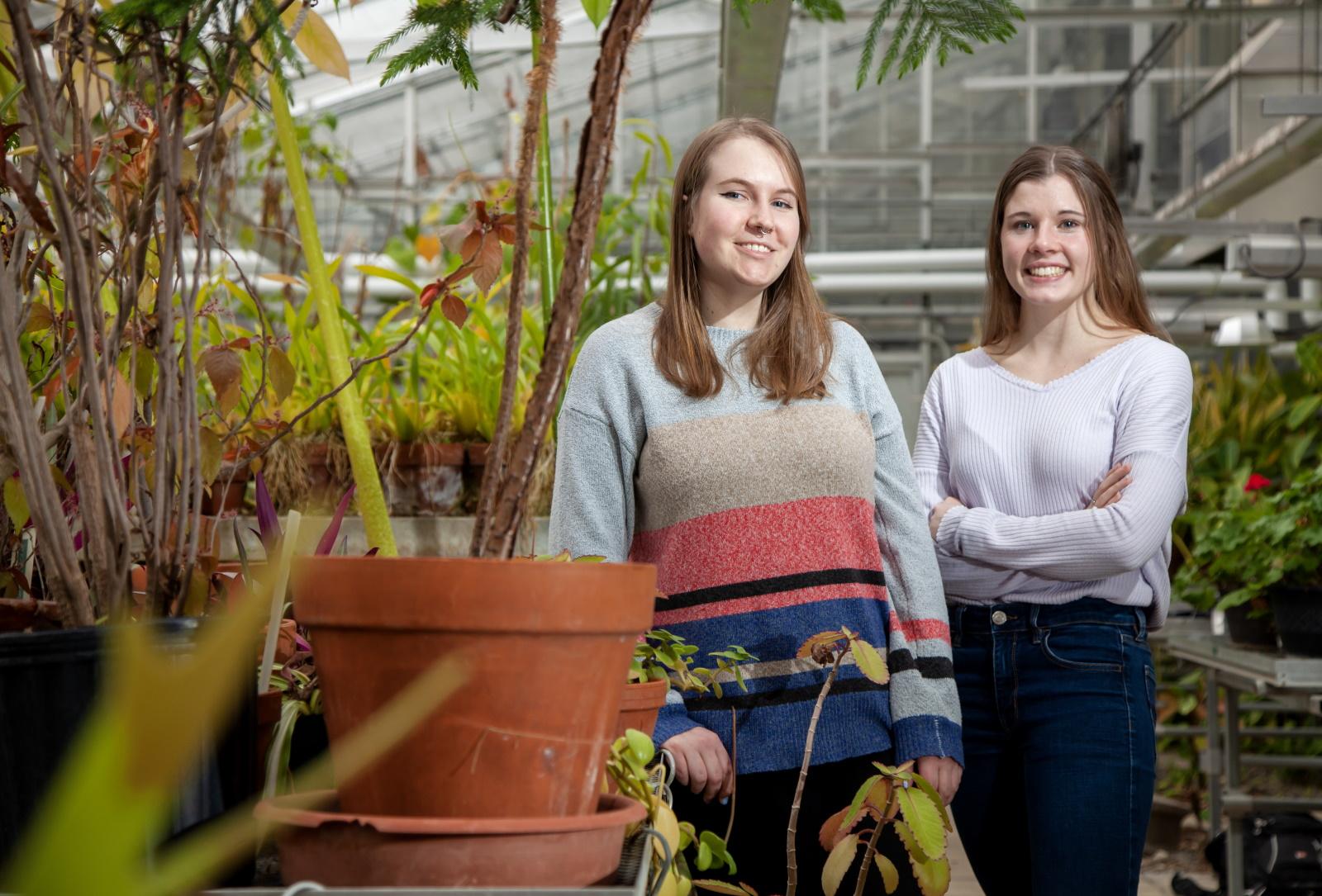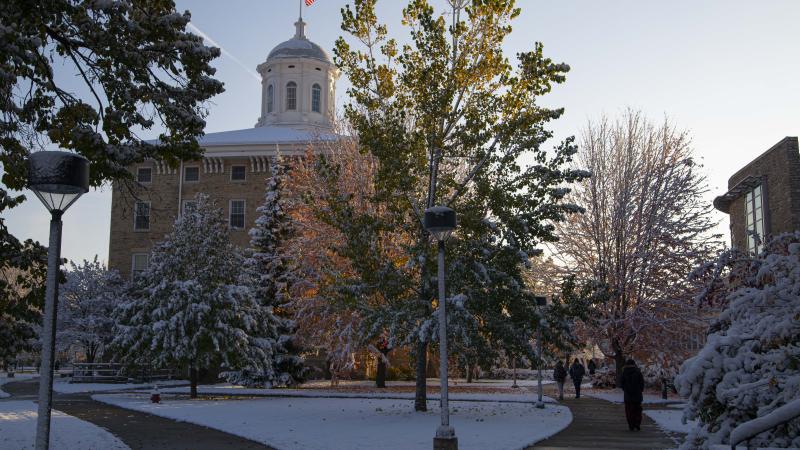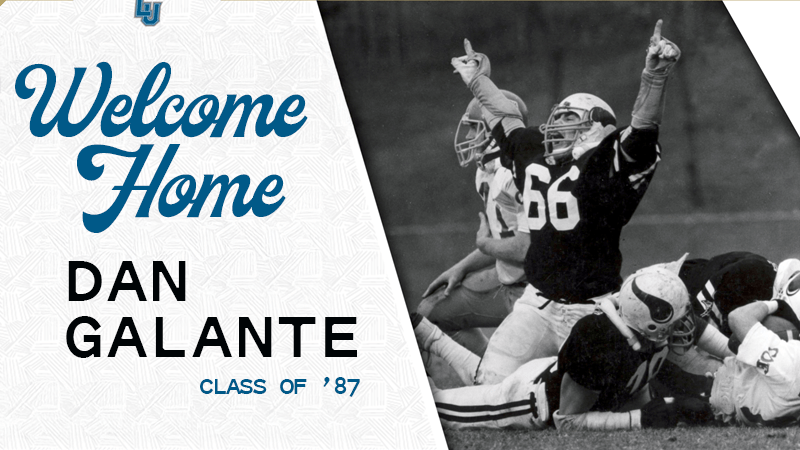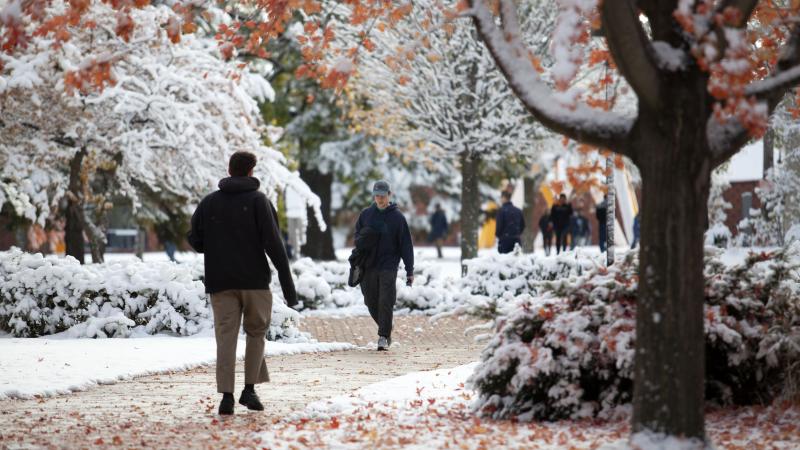Whether it be microbes and their plant hosts or the scientists who study them, science is built on collaboration.
Amber Newman, a senior from Star Prairie, Wisconsin, and Madeline Taylor, a senior from Ames, Iowa, worked together to research and present their findings at the recent American Geophysical Union (AGU) conference in Chicago.
Newman, a dual-degree student majoring in environmental science and flute performance, and Taylor, a triple major in English, environmental studies, and geoscience, teamed up to discover more about the microbial environments of certain plants. The two students joined Relena Ribbons, an assistant professor of geosciences, as Lawrence University Research Fellows (LURF) in the biogeochemistry lab last summer. Their research, Exploring the rhizospheric microbial communities in hydroponically grown leafy greens, focuses on bacteria and fungi that thrive in soil-less ecosystems.
“The purpose of our research is exploratory,” Newman said. “We were looking to find a procedure to successfully isolate DNA from plant roots grown in hydroponic systems since that isn’t something that’s often looked at in science. [Existing research] is mostly soil-based because it’s a lot easier to take a soil sample than to scrape the film off of plant roots.”
Study our planet’s unique features while considering creative solutions to some of the world’s greatest challenges.
Taylor and Newman concurred that seeing so many people interested in the same topic at the conference was eye-opening as they consider career paths in the sciences. It was an opportunity to network and learn more about the field from the numerous graduate students and post-secondary faculty who attended the conference.
Presenting as researchers was also a huge confidence booster.
“It’s easy to forget we’re scientists,” Taylor said. “Going to AGU helped us realize we are doing science, we are doing experiments, and have been for a very long time. We absolutely have the skills to consider ourselves scientists.”
In addition to the AGU conference, the duo’s research has been presented at a LURF gathering and the Mid-states Research Consortium. Newman and Taylor said the other conferences gave them confidence going into the AGU conference, and Ribbons provided valuable feedback.
“I love the geoscience faculty,” Taylor said. “We’re a smaller department, but they’re very supportive. I’ve interacted with all of them in some way.”
Newman agreed: “They care about seeing you do well, even outside of being a student.”
Ribbons said the students were meticulous in developing and executing their research procedures.
“Madeline and Amber were consistently hard-working students and together we worked on getting these hydroponics set-ups consistently producing microgreens,” Ribbons said.
The research began by repurposing an existing PVC-pipe system, and then growing the project to include other hydroponic set-ups. They tracked the growth of the plants for a number of weeks, and then took DNA samples by scraping the film off the plants’ roots. They performed a process called qPCR, or quantitative polymerase chain reactions, which quantified the number of bacteria and fungi in the samples. The isolated DNA was then sent to UW-Madison, where it is being sequenced to identify the precise species of microbes the plants carry. The next step in their research will be to perform statistical analysis of the results to determine if the microbial composition is significant or simply by chance.
By exploring the microbial makeup of these microgreens, Taylor and Newman are hoping to identify plants with high levels of nitrifying bacteria, which are bacteria that turn ammonia into nitrate for energy.
“Bacteria like that is really beneficial for plant growth,” Taylor said. “There’s a lot of hope that the next big thing in agriculture will be bio-fertilizers, instead of harmful chemical fertilizers.”
Taylor and Newman are hopeful their research will help build a strong foundation of knowledge that will lead to effective and widespread bio-fertilizers.
“The environment and nature have always been at the forefront of my life,” Newman said. “Being able to go to school and study both music and environmental science, which are two of my core values, is really cool.”
Taylor said she initially planned to be an English major. She said Marcia Bjornerud, the Walter Schober Professor of Environmental Studies and professor of geosciences and author of Reading the Rocks: The Autobiography of the Earth; Timefulness: How Thinking Like a Geologist Can Help Save the World; and Geopedia: A Brief Compendium of Geologic Curiosities, inspired her to explore the sciences.
“I took an environmental science class and realized it wasn’t that I didn’t like science or was bad at science, I just wasn’t experiencing it in the right way,” she said.



